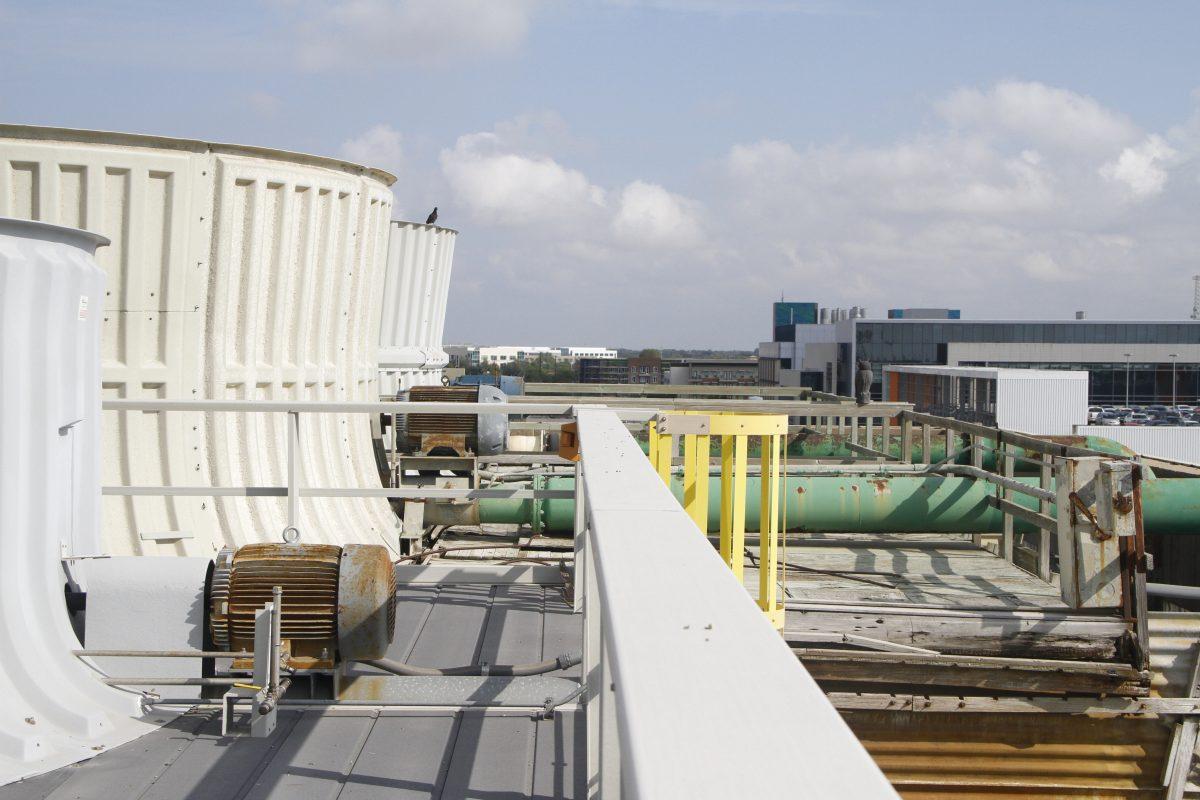Near the crowded Science Learning Center and bustling street of Rutford Avenue stands a tall and tan concrete building with slats on the side.
Men in hard hats and fluorescent suits walk in and out, and an occasional alarm blares loudly when a door to the building opens. This is the UTD Energy Plant. While the exact function of the energy plant is a mystery to students, the building has provided heating and air conditioning throughout campus for decades.
Kevin McDowell, project manager of construction in Facilities Management, said he enjoys working on campus buildings such as the power plant because he likes the tangible nature of the job.
“It’s the invisible comfort that’s provided to them that most people just don’t question. It’s just always there,” McDowell said. “It takes a lot of work and infrastructure to provide that.”
The plant has been in operation since the 1970s and is the producer of the majority of the campus’ air conditioning and heating. Robert Barnes, an international political economy freshman, said he sees workers going in and out of the building and hears loud noises, yet he didn’t have a clear idea of the purpose of the plant.
“You walk past buildings and I have no idea what this is used for … it was a mystery. I thought it was a laboratory,” Barnes said.
The inside of the plant contains boilers and chillers with large pipes going in and out of the building. Connected to the plant are underground pipes that transport water throughout campus, aiding in the ventilation of campus buildings.
The chillers create cold water, which is sent through the buildings and run through coils. Air is blown over the coils, generating air conditioning. After the campus is cooled, the water heats up and returns to the plant. The same cycle occurs with boilers when the campus needs to be heated.
On the roof of the building are the cooling towers, which have large fans inside to blow air and cool the water. There are four cooling towers total, two of which have been in the plant since the building was first built. The older cooling towers are composed of wood, while the newer ones are composed of fiberglass.
“(People) don’t realize how many other things are going on,” McDowell said.
In 2012, another plant was constructed near Parking Structure 1 to provide additional energy. The second plant was built with more chillers and fewer boilers to accommodate for the frequently hot climate in Texas. Both of the buildings perform the same function all throughout campus.
The plant has faced technical issues such as a main switch gear blowing up, causing the plant to stop functioning temporarily in 2013. Because this system operates every day and night, and workers are at the plant at all times to ensure it is operating properly.
“The students are our mission,” McDowell said. “We’re here to serve the campus community as best we can.”







